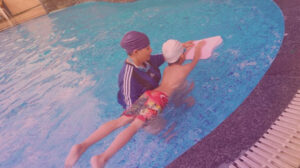RETURN TO SPORT AFTER ACL INJURY
The anterior cruciate ligament (ACL) is one of four major knee ligaments used for stabilization of this joint. The ACL is the most significant ligament for the rotational stability of the knee. Even after an ACL injury, the patient can still walk, climb stairs, and jog, but side-to-side activity is difficult and the knee will “give way.” When a tear to the ACL occurs, the patient often reports they hear a pop and feel a sharp shooting pain in the knee. The knee is often swollen after this type of sports injury, and it may become quite stiff.
Anterior cruciate ligament (ACL) reconstruction surgery is done to rebuild the ligament in the center of the knee with the patient’s own tissue (autograft) or a donor’s tissue (allograft). The ACL keeps the tibia (shin bone) in place, and when it is torn, the knee will give way during exercise, walking, or physical activity. Here are some common myths about ACL reconstruction. For athletes who wish to return to pivoting sports, the typical advice is an ACL reconstruction after 4–8 weeks when the full range of motion is established and there is no joint swelling. The purpose of an ACL reconstruction is to give the athlete a mechanically stable knee and to reduce the risk of subsequent injury to the menisci and cartilage by reducing anteroposterior joint motion. A number of short-term studies have shown good to excellent knee function after reconstruction, whether hamstrings or patellar tendon grafts are used. The same studies also confirm that most patients (65–88%) are able to return to sport within the first year. Thus it is fair to state that surgery is effective in allowing injured athletes to resume their sports career.
Also, some athletes are able to return to high level pivoting sports without surgery. Among patients treated non-operatively, the return rate ranges from 19% to 82%. The athletes who successfully return to sport after non-operative treatment probably represent a selected group with functionally stable knees and a strong motivation to continue pivoting sport despite their injury.
If athletes can return to sport with or without ACL reconstruction, how long are they able to keep playing after the initial injury? Most studies deal with ACL reconstructed patients, and the results vary between studies with a range of 8% to 82%. However, it is not always clear whether the authors are reporting an initial return rate or the proportion still playing at the time of follow up.
Nevertheless, a few studies may be of particular interest, because they follow sports-specific patient populations and report data on patients treated with and without surgery. Also, these studies mainly include elite athletes who can be assumed to be well motivated to continue their sports careers. Thus the data may provide a realistic estimate of what to expect after returning to the sport after injury. Myklebust et al9found in a 6–11 year follow up of ACL injured team handball players that 58% of the reconstructed players and 82% of the conservatively treated patients were able to return to their preinjury level.
In the 10–13 year follow up study with a mixed sports population, Fink et al13 found a 44% reduction in high-risk sports participation in the surgically treated group compared with a 70% reduction among the conservatively treated. In the longest follow up to date, von Porat et.al., 14 showed that, after 14 years, 6% in the operatively treated group and 1% in the conservatively treated group were still playing soccer. However, from these studies, it is not possible to determine whether the players retired because of the injury or whether the retirement rate was higher than can be expected. Clearly, athletes may quit for reasons unrelated to their knee injury.
In the only study in which the reduction in sport participation can be related to a control group, Roos et.al., 10 reported on elite soccer players three to seven years after the ACL injury. They found that 30% were active in soccer after three years compared with 80% in an uninjured control population. In addition, they showed that, after seven years, none of the injured elite players were active regardless of the type of treatment. It seems fair to conclude that, although the initial return rate is high, regardless of treatment, previously injured athletes retire at a higher rate than athletes without previous ACL injuries. The reason for this may be that many of the athletes who return to sports experience significant knee problems, such as instability, reduced range of motion, and/or pain.
RE-INJURY RATE AFTER SURGERY One of the potential concerns with returning to sport is that the re-injury rate to the reconstructed ACL or to other structures (menisci, cartilage, or other ligaments) may be unacceptably high. Only a few studies have examined re-injury risk, and they report a wide range of re-rupture rates ranging from 2.3% to 13%. The highest ACL re-rupture risk (13%) was found by Myklebust et al9 in their study of team handball players. However, one reason for the high risk seen in this study may be that team handball in itself is a high-risk sport. Six of the 50 players who returned to team handball (9%) experienced an ACL tear in their contralateral, previously uninjured knee during the observation period. Drogset and Grontvedt reported a similar re-injury rate, who found that 12% of their patients suffered a re-injury during an eight-year follow-up period, all during pivoting sports.
However, these results, as well as studies reporting lower re-rupture rates, must be interpreted with caution. Firstly, the population at risk is not known, because it clearly depends on the proportion returning to sport and the number of years they continued to play. Secondly, bias must be considered when there is a significant loss to follow up as is evident in most of the studies. Thus, we do not know if there is an increased risk of re-injury to the reconstructed ACL compared with a healthy knee, nor do we know the rate of meniscus or cartilage injury associated with return to sport. Nevertheless, it is clear that nearly all of the re-ruptures reported in the papers shown in table 1 occurred while pivoting sports were being played.
“Returning to pivoting sport without reconstruction results in considerable risk of injury to the menisci and cartilage”
Further damage to the knee with continued sports participation is of course also a concern in non-operatively treated patients. Myklebust et al9 showed that 22% of the non-operatively treated players who returned to sport underwent additional surgery for an injured meniscus compared with 12% in the operatively treated players. Returning to pivoting sport without reconstruction results in considerable risk of injury to the menisci and cartilage.



